How Playing Phonics Games can Improve your Child’s Reading
Introduction

When your child first starts school, helping them learn to read is one of many new parenting tasks you may find yourself tackling. Developing strong reading and writing skills early on will help your child develop self-confidence not just in their future learning but in all aspects of their life.
The way schools teach children to read has changed considerably in the last 40 years. Your child will most likely be learning to read using a phonics scheme. The world of phonics can be a bit of an overwhelming! Reading this blog will give you some basic phonics knowledge so you can
avoid confusing your child when supporting them at home.
Demystifying phonics
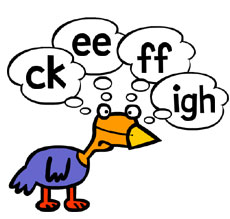
In this blog we will demystify the scary world of phonics by giving you:
- a quick overview of what phonics is
- a brief insight into how phonics is taught nowadays and why,
- knowledge of a few key phonics terms
- ideas for how to make things interesting and approachable with the use of online phonics games.
So, what exactly is phonics?
Phonics is a method of teaching reading and writing that systematically breaks down text and speech into component parts. Presumably, as you are reading this article, you are able to read, write and speak English to a reasonable standard, but you have probably never stopped to think about the way that your brain efficiently converts written letters to spoken sounds and vice versa.
Synthetic phonics vs analytical phonics
There are two well-known phonics teaching methods: analytical phonics and synthetic phonics.
Analytical phonics works by taking whole words and breaking them down into their separate sounds. To put it another way, words are ‘analysed’ to work out how to pronounce them. So a child will see the word ‘sat’ and recognise that it contains the ‘suh’, ‘a’ and ‘tuh’ sounds and work from there. This works well for simple words, but can cause problems for more complicated words. The ‘a’ in ‘father’ is pronounced very differently to the ‘a’ in ‘cat’, for example. Children will need to rely on context, prior knowledge and even guesswork to figure out words.
Synthetic phonics works in the opposite way. Children are introduced to the sounds first, before even attempting whole words. Starting from very simple sounds like ‘s’, ‘a’ and ‘t’ (in synthetic phonics, pronounced crisply and without ‘voicing’ as ‘sss’ ‘a’ ‘t’, not ‘suh’ ‘a’ ‘tuh’), they learn how these sounds are pronounced and written. They can begin to join these sounds together to make words – ‘sss’ ‘a’ ‘t’ very quickly becomes ‘sat’.
In synthetic phonics ‘S’ is pronounced ‘SSS’ and not ‘Suh’
‘A’ is pronounced as a short, crisp ‘a’ sound
‘T’ is pronounced as ‘t’ and not ‘tuh’
Joining the sounds they have learnt together is is called blending. So in synthetic phonics, words are ‘synthesized’ from their phonemes. There is no guesswork or prior knowledge involved and children can easily pronounce words they have never heard before. The process also works in reverse, so whole words can be broken down into their phonemes to allow children to spell them. This is called segmenting.
Blending the letters to sounds = Reading
Segmenting the sounds to letters = Writing
The synthetic approach
The use of a synthetic phonics is currently widely agreed to be the most effective teaching method used in schools in the UK.
The synthetic approach teaches children to read, write and spell slowly and methodically, step-by-step.
Step 1: The Building blocks – Phonemes and Graphemes
Children starting school will begin by learning about phonemes and graphemes.
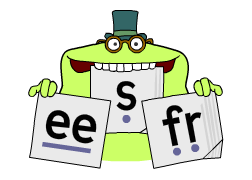
Sounds (phonemes) are represented by a letter or letters (graphemes).
Phonemes are the separate sounds that make up words.
A phoneme can be made up of one letter, ‘s’ or ‘p’ for example, two letters, such as ‘sh’ or ‘ph’ or even three or more letters such as ‘igh’ or ‘our’.
Graphemes are the written letters that represent a phoneme.
The relationship between a phoneme and its grapheme is known by teachers as the Grapheme Phoneme Correspondence, usually abbreviated by teachers to to ‘GPC’. As children build a relationship between written letters and sounds, it becomes completely natural to be able to read words and translate them into sounds, either in their head or out loud.
Step 2: Making words
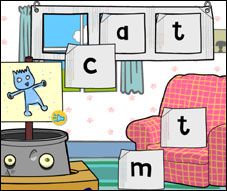
Once children have learned some simple GPCs, they can begin blending them into simple words. Consonant-vowel-consonant words (called CVC words) like ‘cat’, ‘dad’, ‘dog’ are often taught first. As children learn more GPCs they will move onto words with adjacent consonants (CVCC and CCVC words) like ‘sand’ and ‘step’.
Step 3: Building simple sentences
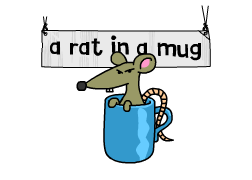
With the addition of a few ‘tricky’ words that can’t be easily broken down into simple phonemes (for example ‘the’, ‘I’, ‘go, ‘into’, ‘no’, ‘to’) children can start constructing basic sentences (‘The cat is on the bed.’, ‘I go to the shop.’).
Step 4: Oh no! There’s more than one way to spell the same sound!
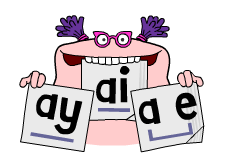
The next step is learning that sometimes phonemes are spelt differently! The phoneme ‘sh’ in ‘shop’ is spelt differently to the ‘sh’ in ‘chef’.
Also some graphemes pronounced differently. The grapheme ‘a’ in ‘cat’ is pronounced very differently to the ‘a’ in ‘acorn’.
Once all the multiple spellings of individual sounds have been learnt, children should be able to pronounce and spell pretty much any word in the English language!
When these skills are taught in the right way, and are practised from the outset, literacy knowledge develops very quickly indeed.
Free Phonics Glossary

Children at school are also taught the phonics vocabulary from the outset, so it becomes familiar to them and is not just the teachers’ domain. Your child should be completely comfortable talking about phonemes, graphemes, blending and segmenting.
It may seem like the world of phonics is a whole new language but there’s just a few key words and phrases that you need get to grips with. Here’s a handy glossary to print out and stick on the fridge!
The Effectiveness of synthetic phonics in learning to read
A 2014 study conducted by Dr. Marlynne Grant mentions the results of testing 700 reception aged children in 1997 whilst analytical phonics was still a popular method.
“They were taught synthetic phonics for one term, and by the end of this term, they were six months ahead of chronological age for both reading and spelling. She concludes by saying “an early grounding in synthetic phonics can make it possible for all children to leave primary school better able to access the secondary-school curriculum.”
The benefits of online phonics games in learning to read
The most successful online educational games make the process of learning fun and enjoyable through a mixture of animation, humour and gameplay. A well designed game will encourage the child to experiment and not be afraid of getting it wrong.
Learning to take risks is believed to be beneficial to learning. Playing games encourages children to take risks in order to progress. A study by Itamar Shatz, of the University of Tel Aviv found that high levels of risk taking were associated with improved performance, increased self-confidence, and reduced anxiety, all of which are beneficial to learning.
If the game has all these elements your child will want to keep playing, learning and improving. Games that activate the rewards receptor in the brain will keep your child chasing achievement. Combining educational games with synthetic phonics content should then prove an extremely effective way of helping your child learn to read.
Try our Phonics games – free for 7 days!

Busy Things has an amazing and comprehensive selection of phonics games, designed to help you guide your child step by step through the phonics learning process. You can try all our games free for 7 days. If you want to know more about our individual phonics games you can read about them in our blog Fun Phonics Games to Help Your Child Learn to Read.
Conclusion
Learning to read, write and spell needs to be taught slowly and methodically. There will be books coming home in your child’s book-bag that you can share with them, but you can also make this important step interesting, and even enjoyable by turning to phonics games! There’s all sorts of phonics games you can play but playing phonics games online is a proven to be a great way to support your child at home.
The use of synthetic phonics to teach children to read is heavily supported by academic studies conducted by universities and academics around the world. The governments of the UK, Australia, Canada and the USA encourage the use of synthetic phonics, so if you are a parent in one of these countries the synthetic approach is most likely to build on what your child is learning at school.
For tips to support reading at home head to our blog How to enjoy reading: 10 ways to encourage children to love reading.
Busy Things hosts over 60 award-winning phonics activities that adopt the synthetics phonics approach. In addition to phonics, we have a huge selection of activities and games exploring other subjects, including English, Maths, Science, Geography, History and Art. You can start supporting your child’s learning today, by trying Busy Things for free!
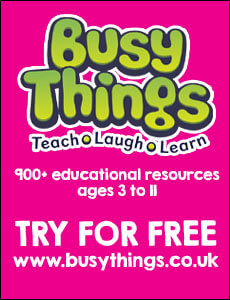
2 Replies to “How Playing Phonics Games can Improve your Child’s Reading”
thank you for highlighting this. there seems to be a backlash in some quarters. I am an ESL teacher in Hong Kong and phonics is often over looked! We push hard on it but the general program doesn’t.
I even set up my site to help combat this. Have you experienced much of the push back from others in education?
Very Nice Article! Truly said phonics really important place in developing strong reading and writing skills!